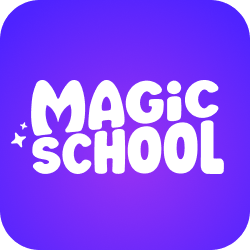AI @ ISB
Our Position on Generative AI
The International School of Beijing (ISB) is committed to fostering an inclusive, innovative, and future-focused learning environment that prepares students to thrive in an increasingly interconnected and rapidly evolving world. As part of this commitment, we recognize the significant potential of artificial intelligence (AI) to enhance teaching and learning experiences as well as our obligation to support our community in better understanding the impact and continuous evolution of AI capabilities.
The use of AI technologies is not intended to replace independent thinking and learning. In fact, ISB believes that critical thinking skills are more important than ever as is the need for learners to document, share, and explain their process of learning. A user’s background knowledge and prior experience provide critical context to utilize generative AI technologies to their fullest.
The AI Stoplight
 To make it clear to students and parents the expectations for each teacher with respect to the use of AI in that class, we have developed the AI Stoplight. This is a common tool used by schools to clearly indicate what the “default setting” in each classroom, though this may shift at times. Most importantly, we are trying to eliminate any source of confusion or feeling of “I didn’t know” amongst students. This information is also published on each course syllabus in the high school
To make it clear to students and parents the expectations for each teacher with respect to the use of AI in that class, we have developed the AI Stoplight. This is a common tool used by schools to clearly indicate what the “default setting” in each classroom, though this may shift at times. Most importantly, we are trying to eliminate any source of confusion or feeling of “I didn’t know” amongst students. This information is also published on each course syllabus in the high school

Generative AI Tools Supported by ISB
There is a wide range of generative AI tools available online, both for free and with paid subscriptions. And there are more and more coming each day!
At ISB, we are committed to providing guided, moderated access to appropriate and up-to-date tools to allow our students and teachers the best possible environment to learn how to effectively use AI in a moderated fashion and to improve their own AI literacy, allowing them to use any current or future AI tool with confidence.
The tools we currently support that have AI capabilities are:
Other Popular AI Tools
For staff, students, or parents of students who choose to use tools that are not specfically provided by ISB, they are responsible for:
- Ensuring that personally identifiable information, such as full names, identification numbers (passports, student ID, etc.), addresses, or any other information that can be used to directly or indirectly identify an individual, are not shared;
- Understanding how the AI platform uses user input to further train the model;
- Knowing the AI tool’s Terms of Service, particularly the minimum age of users and the need for parental consent. If parental consent is required, the tool is used only with permission of the divisional principal.
With that being said, here are tools which have been recommended by other educators at ISB and around the world:
- Perplexity: Perplexity AI is an AI-powered search engine that responds to your questions with concise and well-sourced answers. It’s like a mix of a search engine and a conversational assistant, helping you quickly find reliable information. Users must be 13 or older. It is free to use with unlimited searches and responses.
- Ellicit: Elicit is an AI research assistant designed to help with academic or professional research. It can find and summarize scientific papers, suggest research ideas, or assist with literature reviews, saving time for researchers. There are no explicit age restrictions, but it’s intended for students, professionals, and researchers. Elicit is currently free to use with unlimited access to its features.
- Mizou: Mizou is an AI-powered learning assistant that helps students and educators with personalized learning. It can assist with creating study guides, answering questions, generating quizzes, and summarizing complex topics. Mizou is designed to make learning more interactive and efficient. It is recommended for students aged 13 and older, though younger users may use it with teacher supervision. The free version offers basic features like question answering and summaries. Create an account with your school email address.
- SchoolAI: Similar to MagicSchool, School AI is an education-focused platform designed to assist students and teachers with learning and productivity. It helps with tasks like generating lesson plans, answering homework questions, or creating educational materials. It’s tailored for academic use, making AI tools accessible in a school-friendly environment. Students are not able to create their own School AI accounts and can only uses tools designated by their teacher. Sign in with your Microsoft 365 account.
- Poe: Poe allows you to chat with various AI models, such as ChatGPT, Claude, and others, all in one place. It’s a convenient way to explore and compare responses from different AI systems. Users must be 13 or older in order to sign up. The Free Tier allows you to chat with several AI models, but there are daily limits on usage.
- ChatGPT: ChatGPT is an AI-powered chatbot that can help answer questions, have conversations, provide writing assistance, or even help with problem-solving. It’s like having a virtual assistant that can chat with you in natural language. Users must be 13 years or older to use ChatGPT. If they are a citizen of the EU, they must be at least 16 years old. It can be used for free with some limits on usage and response speed.
- DALL-E: DALL·E is an AI tool that creates images from text descriptions. Users can write a description, like “a futuristic city at sunset,” and DALL·E will generate a picture. Same as ChatGPT, users must be 13 or older, or 16+ in the EU. The free version includes a limited number of free image generations per month.
- Research Rabbit: Research Rabbit is a tool designed to help students, academics, and researchers discover and explore academic papers, articles, and connections between research topics. It’s often called a “Spotify for research” because it recommends related papers based on your interests, helping you build a network of relevant studies. It’s a great way to streamline literature reviews and stay updated on new research. There are no specific age restrictions, but it’s intended for students, researchers, and professionals. It is currently free for all users after creating an account.
Guidelines for Effective GenAI Prompts
It is important that users know how to write effective prompts when using generative AI tools. This helps to ensure high-quality output. The following frameworks can be used by staff and can be adapted to an age appropriate level in order to be taught to students.
The CLEAR Framework
- Concise: Prompts should be brief and clear, eliminating unnecessary language to help the AI focus on the key components of the request.
- Logical: Prompts should be structured in a coherent manner, ensuring a logical flow of ideas to facilitate better understanding by the AI.
- Explicit: Clearly specify the desired output format and content. This helps the AI understand exactly what is expected in the response.
- Adaptive: Prompts should allow for flexibility and customization, enabling users to refine their requests based on the AI’s previous responses.
- Reflective: Continuous evaluation and improvement of prompts are essential to ensure that the outputs generated by the AI meet the user’s needs effectively
For students, it might be more useful to use or adapt the following:
C – Context
- What it means: Give some background information so the AI understands what you’re talking about.
- Good Practice: “I’m writing a report on climate change and need to know its causes.”
- Bad Practice: “Tell me about it.” (Too vague; the AI won’t know what “it” is.)
L – Language
- What it means: Use clear and specific words. You can also say what tone you want (like serious or friendly).
- Good Practice: “Please explain in a friendly tone.”
- Bad Practice: “Explain this.” (Doesn’t say how to explain or what tone to use.)
E – Examples
- What it means: Give examples of what you’re looking for. This helps guide the AI.
- Good Practice: “For example, I want a list like: 1. Greenhouse gases, 2. Deforestation.”
- Bad Practice: “Give me some things.” (Too general; not specific enough.)
A – Action
- What it means: Clearly say what you want the AI to do.
- Good Practice: “List three main causes of climate change.”
- Bad Practice: “Talk about climate change.” (Not clear on what action to take.)
R – Result
- What it means: Tell the AI how you want the answer to look.
- Good Practice: “Give me a short paragraph explaining this.”
- Bad Practice: “Just give me an answer.” (Doesn’t specify the format or length.)
The COSTAR Framework
The COSTAR framework is a simple tools that was developed by a data science and AI team in Singapore to improve generative AI output:
(C) Context: Provide background information on the task
- This helps the AI tool understand the specific scenario being discussed, ensuring its response is relevant.
(O) Objective: Define what the task is that you want the AI tool to perform
- Being clear about your objective helps the AI tool to focus its response on meeting that specific goal.
(S) Style: Specify the writing style you want the AI tool to use
- This could be a particular famous person’s style of writing, or a particular expert in a profession, like a business analyst expert or CEO. This guides the AI tool to respond with the manner and choice of words aligned with your needs.
(T) Tone: Set the attitude of the response
- This ensures the AI tool’s response resonates with the intended sentiment or emotional context required. Examples are formal, humorous, empathetic, among others.
(A) Audience: Identify who the response is intended for
- Tailoring the AI tool’s response to an audience, such as experts in a field, beginners, children, and so on, ensures that it is appropriate and understandable in your required context.
(R) Response: Provide the response format
- This ensures that the AI tool outputs in the exact format that you require for downstream tasks. Examples include a list, a table, a short paragraph, a professional report, and so on.
Our Full Guide to Using Generative AI @ ISB
If you are an ISB community member you should see the document embedded below. If not, use this link:




